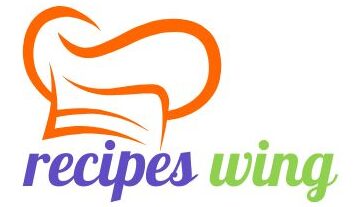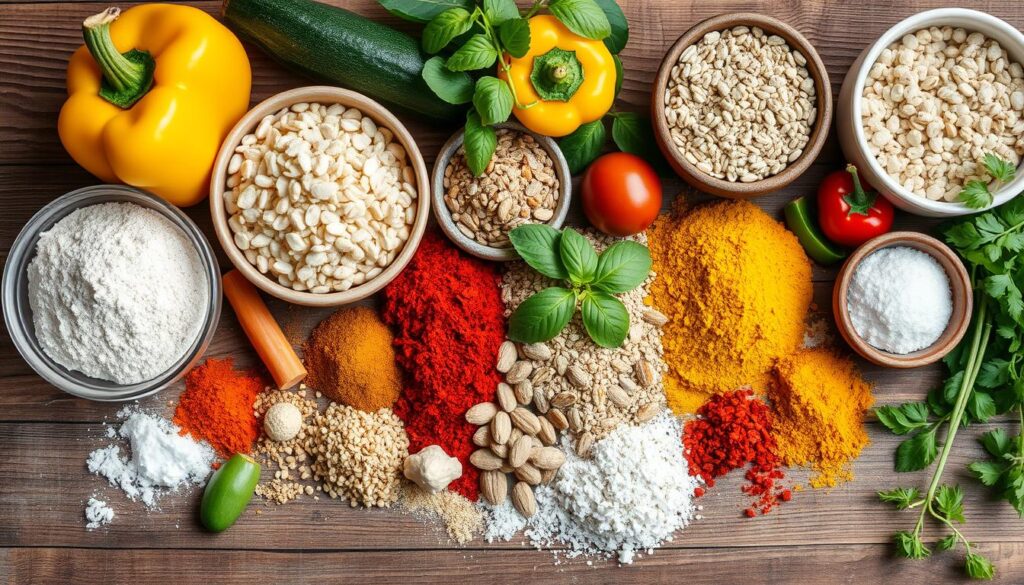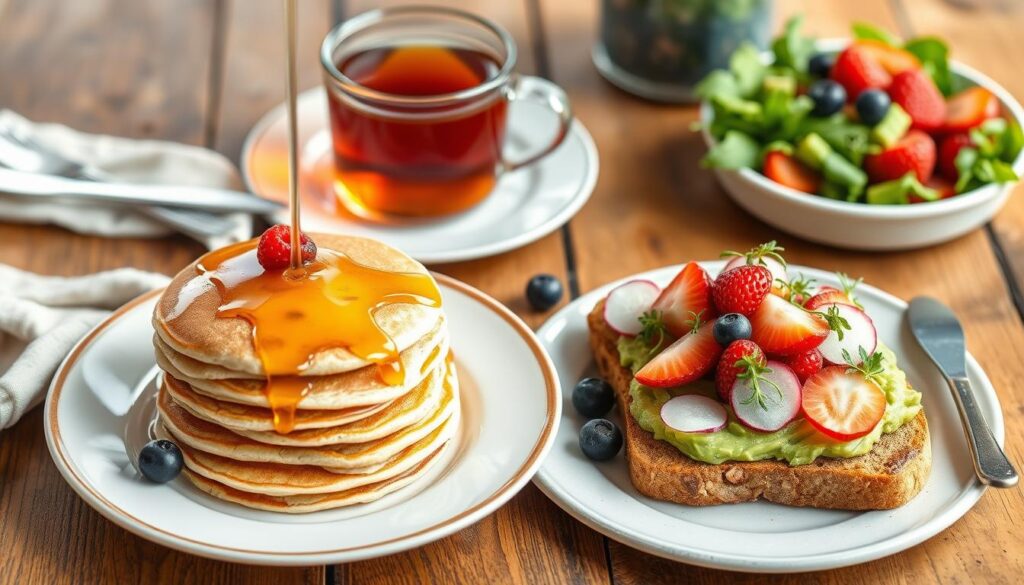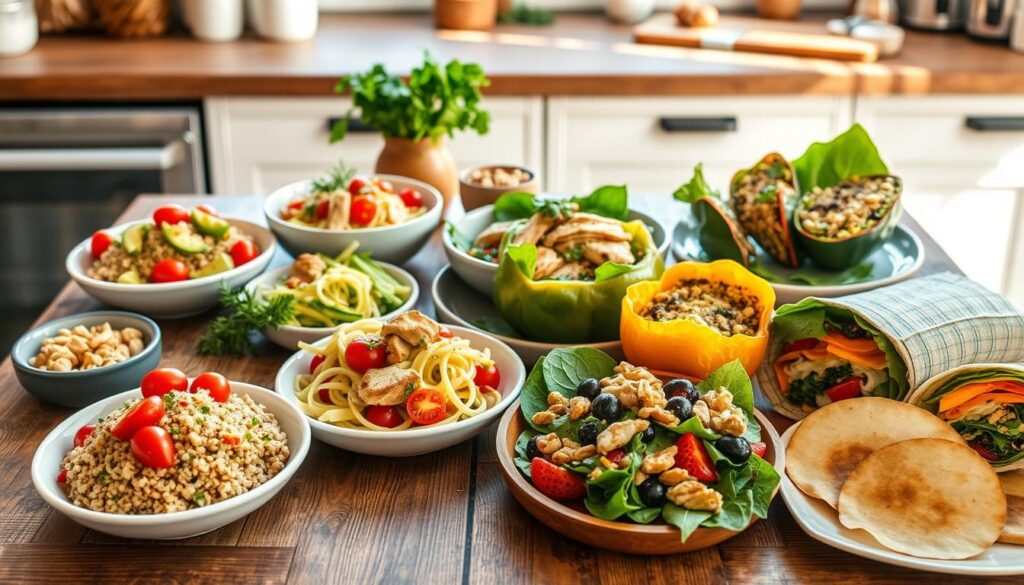gluten-free recipesgluten-free recipesFinding tasty meals that fit dietary needs can be tough. But, I’ve got a solution for you. These 10 easy gluten-free recipes are not only delicious but also quick to make. They’re great for busy days or weekend meals.
These dishes are perfect if you have celiac disease or just want to eat healthier. You’ll love cooking with ingredients like quinoa, almond flour, and zucchini noodles. They’re all gluten-free, so you can avoid wheat, barley, and rye.
Key Takeaways
- Discover 10 easy and delicious gluten-free recipes for all meals.
- Learn about gluten-free ingredients like quinoa, almond flour, and zucchini noodles.
- Explore recipes that cater to various dietary needs, including low-carb and vegan options.
- Discover unique cooking techniques and flavor combinations to enhance your gluten-free meals.
- Enjoy quick and healthy meal solutions that are perfect for busy weeknights.
Introduction to gluten-free recipes Cooking
Starting a gluten-free journey can be both thrilling and at times challenging. Gluten, a key protein in wheat flour, significantly affects the taste and texture of baked goods. For this reason, those with gluten sensitivities or celiac disease benefit from exploring gluten-free cooking, which opens up exciting new flavors.
Benefits of gluten-free recipes Diet
Following a gluten-free diet can bring many health benefits. Not only can it reduce inflammation, but it may also improve digestion and boost energy. Additionally, it helps with nutrient absorption and overall health. For instance, for those with celiac disease, avoiding gluten is crucial to prevent digestive and nutritional problems.
Common gluten-free recipes Ingredients
- Rice flour
- Corn flour
- Potato starch
- Almond flour
- Coconut flour
- Legume-based flours (e.g., chickpea, lentil)
By using these ingredients, you can create a wide range of tasty gluten-free dishes. Moreover, knowing how to use them is essential for successful gluten-free cooking and baking.
Gluten-free cooking requires some adjustments. For example, you might need to rest batters, use binders like xanthan gum, and adjust baking times. With practice and attention to ingredient labels, you can create delicious, gluten-free meals that fit your dietary needs.
Breakfast Ideas
Start your day with delicious yet nutritious gluten-free breakfast options. Explore how these tempting recipes cater to your dietary restrictions and gluten intolerance. They cleverly use alternative ingredients to create flavorful and satisfying meals.
gluten-free recipes Banana Pancakes
Enjoy a stack of fluffy banana pancakes made with almond flour for a heartwarming breakfast. To enhance the flavors, top them with fresh berries, a drizzle of maple syrup, and a sprinkle of cinnamon. In addition to being easy to prepare, these pancakes can be customized to suit your taste preferences.
Savory Quinoa Breakfast Bowl
Fuel your morning with a protein-packed quinoa breakfast bowl. This savory dish features cooked quinoa, sautéed vegetables, and a perfectly cooked egg. Furthermore, you can customize it with your choice of toppings, such as avocado, roasted tomatoes, or a sprinkle of shredded cheese. Altogether, it makes for a well-rounded and gluten-free start to your day.
“Embracing a gluten-free lifestyle doesn’t mean sacrificing the joy of a delicious breakfast. These recipes prove that you can enjoy satisfying and nutritious meals, even with dietary restrictions.”
“Embracing a gluten-free lifestyle doesn’t mean sacrificing the joy of a delicious breakfast. These recipes prove that you can enjoy satisfying and nutritious meals, even with dietary restrictions.”
Lunch gluten-free recipes
Enjoy satisfying gluten-free lunches that are both nutritious and delicious. Discover how these wheat-free recipes strike the perfect balance of flavor and nutrition.
Chickpea Salad Sandwich
Protein-packed chickpeas take the spotlight in this delightful gluten-free sandwich. Mashed with a touch of mayonnaise, lemon juice, and fresh herbs, the creamy chickpea salad offers a satisfying alternative to traditional lunchtime staples. For a wholesome meal, serve it on your favorite gluten-free bread or lettuce wraps.
Zucchini Noodle Salad
Instead of heavy pasta, swap it for light and refreshing zucchini noodles in this vibrant grain-free salad. Tossed with a tangy lemon dressing, crisp vegetables, and your choice of protein, this allergen-friendly dish is the perfect way to enjoy a nourishing and satisfying lunch. For extra crunch, top it off with toasted nuts or seeds.
Butternut Squash Soup
Cozy up to a bowl of this creamy, wheat-free baking delight. Roasted butternut squash, simmered in a savory broth and blended to perfection, creates a comforting and allergen-friendly soup. Garnish with a drizzle of olive oil, a sprinkle of pumpkin seeds, and a side of gluten-free crackers for a complete and satisfying lunch.
Dinner Delights
Following a celiac diet or dietary restrictions doesn’t mean you have to miss out on flavor. In fact, you can still enjoy satisfying meals that are both delicious and nutritious. Here are two tasty gluten-free dinner options that everyone will love. Whether you choose the tangy lemon herb grilled chicken or the stuffed bell peppers, you’re sure to impress your family and friends.
Lemon Herb Grilled Chicken
Make your weeknight meal special with this juicy lemon herb grilled chicken. To begin, marinate the chicken in fresh lemon juice, garlic, and herbs. Then, grill it to perfection, ensuring it remains tender and flavorful. For a complete meal, pair it with gluten-free sides like roasted veggies or perhaps a crisp salad.
Stuffed Bell Peppers
If you’re looking to add more vegetables, these vibrant stuffed bell peppers are an excellent choice. Start by filling bell peppers with a flavorful mix of ground turkey or even plant-based protein, quinoa, diced tomatoes, and spices. After baking, the peppers become tender, and the filling turns warm and melty, creating a dish that is as nutritious as it is delicious.
In summary, these gluten-free dinner delights are full of vibrant flavors and offer a guilt-free way to enjoy a hearty meal. Whether you’re exploring new gluten-free recipes or searching for alternative ingredients, these dishes are sure to satisfy your taste buds while meeting your dietary needs.
Snack Options
Snacking can be tough on a gluten-free diet, but there are many tasty and healthy choices. Crunchy almond flour crackers and energy-boosting date bites are just a few. These snacks will keep you full and guilt-free.
Almond Flour Crackers
Forget wheat-based crackers and make your own almond flour ones. You’ll need almond flour, olive oil, and sea salt. These crackers are crispy, perfect for hummus or on their own. They’re gluten-free and packed with healthy fats and protein.
Energy Bites with Dates
Need a quick energy boost? Try these tasty date-based energy bites. They mix dates, nut butter, and seeds for a sweet and nutritious snack. You can also add nuts, spices, or chocolate for extra flavor.
Looking for a crunchy or chewy snack? These gluten-free options will hit the spot. Try different flavors and enjoy the ease of making these snacks.
Sweet Treats
Indulging in delicious gluten-free desserts doesn’t mean compromising on flavor. Whether you’re preparing for a special event or simply treating yourself, these recipes are sure to satisfy your sweet tooth. From a rich flourless chocolate cake to light coconut macaroons and refreshing berry crisp, there’s something for everyone.
Flourless Chocolate Cake
To begin with, savor the deep, indulgent flavors of a flourless chocolate cake. This dessert is naturally gluten-free, thanks to the rich combination of cocoa and chocolate. For an extra touch, top it with whipped cream or perhaps allergen-friendly vanilla ice cream to create the ultimate treat.
Coconut Macaroons
If you prefer something chewy and light, coconut macaroons are a fantastic choice. These delightful treats use simple ingredients like shredded coconut, egg whites, and sweetener. Once baked, they become a satisfying snack or dessert that’s both easy to make and enjoyable to eat.
Berry Crisp
Finally, enjoy the fresh taste of the season with a gluten-free berry crisp. Using a mix of fresh or frozen berries, this dessert is both vibrant and comforting. The crisp topping, made with oats, nuts, and a hint of sweetener, adds a delightful crunch. For a finishing touch, serve it warm with dairy-free ice cream or allergen-friendly caramel sauce.
In summary, these gluten-free desserts showcase how easy it is to create indulgent treats without sacrificing flavor or texture. Whether you choose the cake, macaroons, or crisp, each option offers a delicious way to end any meal on a high note.
| Dessert | Calories | Carbs | Protein | Fat | Fiber |
|---|---|---|---|---|---|
| Flourless Chocolate Cake (1 slice) | 400 | 32g | 8g | 28g | 4g |
| Coconut Macaroons (2 cookies) | 160 | 15g | 2g | 11g | 2g |
| Berry Crisp (1/2 cup) | 180 | 25g | 3g | 8g | 5g |
“Gluten-free baking has come a long way, and these sweet treats prove that you can indulge without compromising on flavor or texture.”
gluten-free recipes Substitutes
Starting a gluten-free diet doesn’t mean giving up on taste or texture. In fact, many specialty flours and ingredients can easily replace wheat-based products. Almond flour and coconut flour are just a few examples that make gluten-free baking and cooking both easy and fun.
Common gluten-free recipes Substitutes
To begin with, here are some popular alternatives to wheat flour:
- Almond flour: Made from ground almonds, it’s ideal for grain-free meals and desserts.
- Coconut flour: Produced from dried coconut, it’s high in fiber and creates tender baked goods.
- Gluten-free oats: Naturally gluten-free, they are perfect for breakfast and snack recipes.
- Chickpea flour: Also known as garbanzo bean flour, this option is high in protein and adds a nutty taste.
- Cassava flour: Derived from the cassava root, it serves as an excellent all-purpose substitute for sweet and savory dishes.
Tips for Substituting Flour in gluten-free recipes
To ensure success with gluten-free flours, keep these tips in mind:
- Adjust the liquid: Gluten-free flours absorb more liquid, so you may need to add extra milk, eggs, or water.
- Add binders: Ingredients like xanthan gum or psyllium husk improve texture and prevent crumbling.
- Experiment with blends: Combining flours, such as almond and coconut, can enhance both texture and flavor.
- Measure accurately: Because gluten-free flours are denser, it’s best to use a kitchen scale or carefully spoon the flour into measuring cups.
By following these tips, you can confidently create tasty grain-free meals. With some practice, you’ll master the art of using specialty flours and explore a variety of gluten-free recipes that suit your dietary needs.
Cooking Methods for gluten-free recipes Meals
Starting a gluten-free diet doesn’t mean you have to sacrifice the joy of cooking. Whether you’re baking, grilling, or experimenting with other techniques, learning the right methods ensures your food is safe, flavorful, and enjoyable.
Baking Techniques
To begin with, baking gluten-free treats can be challenging, but it’s rewarding. Gluten-free flours like almond, coconut, and rice flour behave differently from wheat flour. As a result, you may need to include additional ingredients, such as xanthan gum, to provide structure and prevent crumbling. Moreover, experimenting with various flour combinations can yield the best results.
In addition, you might need to adjust the oven temperature and baking time. Gluten-free foods often require lower heat and longer cooking times. Therefore, keep a close eye on your baked goods to ensure they turn out perfectly.
gluten-free recipes Tips
Grilling is another excellent method for preparing gluten-free meals. To start, clean the grill thoroughly and use separate tools to prevent cross-contamination. Furthermore, opt for gluten-free marinades and sauces to enhance flavor while ensuring your meal stays safe.
When grilling, monitor your food carefully, as gluten-free items may cook faster or at lower temperatures than their gluten-containing counterparts. By experimenting with different grilling methods, you can find what works best for various dishes.
In conclusion, mastering gluten-free baking and grilling will expand your repertoire of delicious recipes. Whether you’re on a celiac diet or simply exploring allergen-friendly cooking, these methods let you enjoy a wide variety of meals. Dive into the process, embrace the challenge, and let your culinary creativity shine!
Meal Prep Tips for gluten-free recipes Cooking
Meal prep is a game-changer for gluten-free recipes cooking. It saves time and ensures you have healthy, gluten-free meals ready, especially on busy weekdays. To get started, here are some efficient meal prep ideas:
Efficient gluten-free recipes Meal Prep Ideas
First, begin with a weekly meal plan. By choosing recipes that use similar ingredients, you can save money and reduce food waste. Additionally, batch cook essentials like quinoa, roasted veggies, and proteins. This not only makes meal prep easier but also helps ensure you always have something ready to eat.
Furthermore, using versatile kitchen tools, such as air fryers, can speed up the process. They are perfect for quickly cooking many gluten-free dishes. Also, consider preparing ingredients ahead of time—chopping veggies or marinating proteins in advance can save you time during the week.
Lastly, take advantage of online grocery services. These platforms offer a wide range of gluten-free products, so you can get everything you need without the stress of navigating the aisles.
Batch Cooking for Busy Weeks
Batch cooking is key for gluten-free recipes meal prep. Spend a few hours over the weekend cooking large batches of your favorite dishes. This not only saves you time but also ensures you have plenty of meals ready throughout the week. In this way, you can enjoy the convenience of having healthy, homemade meals without the hassle of cooking daily.
| Gluten-Free Meal Prep Staples | Benefits |
|---|---|
| Quinoa, Brown Rice, and Lentils | Versatile, nutrient-dense, and easily incorporated into various dishes. |
| Roasted Vegetables (Broccoli, Cauliflower, Sweet Potatoes) | Provide fiber, vitamins, and minerals, and can be used in salads, bowls, or as side dishes. |
| Grilled or Baked Chicken, Salmon, or Tofu | Serve as protein-rich components for well-balanced meals. |
By using these meal prep tips, you can enjoy tasty, gluten-free meals easily. Even on your busiest days, you’ll have healthy options ready.
Conclusion: Embrace gluten-free recipes Cooking
Exploring gluten-free recipes is an exciting adventure, especially for those with celiac disease or anyone simply looking to enjoy healthier food options. Moreover, the variety of wheat-free baking alternatives opens up a new world of flavors and possibilities.
To start this journey, it’s important to approach it with an open mind and a willingness to try new things. In fact, this is a great opportunity to discover delicious gluten-free dishes that are not only tasty but also good for your health.
Encouragement to Experiment
Additionally, don’t hesitate to experiment with new ingredients and cooking methods. gluten-free recipes cooking encourages you to use a wide range of ingredients, from quinoa to almond flour, offering endless possibilities. This can lead to creative meals that you may not have tried before.
By making tasty gluten-free recipes meals, you’ll not only please your taste buds but also nourish your body, helping it stay strong and healthy.
Resources for More Recipes
To further enhance your journey into gluten-free recipes cooking, it’s important to explore a variety of resources. Websites, cookbooks, and support groups are all excellent avenues to gather more recipes, tips, and advice. For instance, trusted websites like Gluten-Free Goddess, Minimalist Baker, and Celiac Disease Foundation offer extensive gluten-free recipes and helpful tips. Additionally, cookbooks such as The How Can It Be Gluten-Free Cookbook by America’s Test Kitchen and Gluten-Free on a Shoestring by Nicole Hunn provide comprehensive guides for beginners and seasoned cooks alike.
Joining online support groups or communities such as the gluten-free recipes subreddit or Facebook groups can also offer valuable peer support and recipe exchanges. With these tools, you can boost your confidence and creativity, ensuring that you feel empowered to make delicious, gluten-free recipes meals. Whether you’re seeking a quick snack or a special dinner, you’ll have a wealth of inspiration at your fingertips!
.
FAQ
What are the health benefits of a gluten-free diet?
A gluten-free diet can help with digestion and boost energy. It is particularly beneficial for those with gluten intolerance or celiac disease. Furthermore, it may improve nutrient absorption and reduce inflammation, contributing to overall better health.
What are some common gluten-free ingredients?
Common gluten-free ingredients include rice, corn, potatoes, and legumes. Additionally, quinoa, almond flour, and coconut flour are excellent alternatives. These ingredients not only support gluten-free eating but also help make delicious and nutritious meals and baked goods.
How can I identify hidden sources of gluten in packaged foods?
When checking food labels, look for wheat, barley, rye, and malt, as these often contain gluten. Moreover, be aware of hidden gluten in products like soy sauce, salad dressings, and certain spice mixes, which may not always be obvious.
What are some tips for successfully substituting gluten-free flours in recipes?
When using gluten-free flours, you may need to adjust the baking temperature and time for the best results. In addition, adding ingredients like xanthan gum or chia seeds can help improve texture. It’s also helpful to experiment with different flour blends to find the most suitable substitutes for your recipes.
How can I make my gluten-free cooking and baking more efficient?
Meal prepping and batch cooking are effective ways to streamline gluten-free cooking. By preparing staples such as quinoa, roasted vegetables, and proteins in advance, you save time and ensure that healthy, gluten-free meals are always on hand.
Where can I find more resources for gluten-free cooking and recipes?
For additional resources, consider exploring gluten-free cookbooks, websites, blogs, and online communities. Additionally, joining a gluten-free support group can provide valuable advice, insights, and encouragement for navigating a gluten-free lifestyle.




